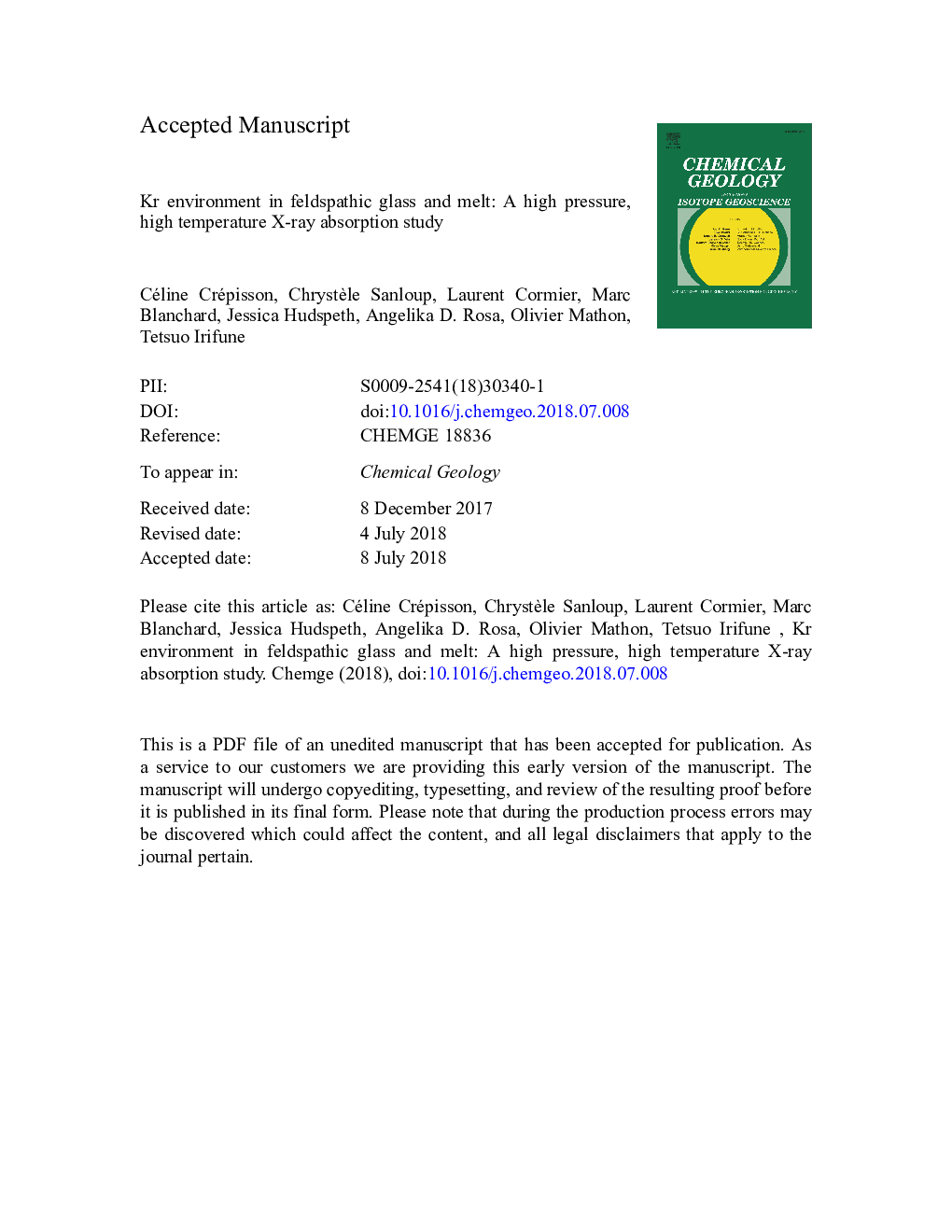| Article ID | Journal | Published Year | Pages | File Type |
|---|---|---|---|---|
| 8910169 | Chemical Geology | 2018 | 34 Pages |
Abstract
Noble gases are used to trace the evolution of the Earth's atmosphere and magmatic processes. However little is known about their solubility mechanisms in silicate melts or glasses, whereas it could be fundamental to interpret these data. We report here the first in situ X-ray absorption spectroscopy data at the Kr K-edge on a feldspathic Kr-bearing glass and melt (0.5â¯wt% Kr) up to 2.7â¯GPa and 1086â¯Â°C. Kr fitting of the EXAFS signal shows that Kr is surrounded by oxygen atoms. Two Kr-O distances are identified: 2.49â¯Â±â¯0.1â¯Ã
and 3.32â¯Â±â¯0.1â¯Ã
. Results can be interpreted as two Kr populations. Kr surrounded by O atoms at 3.32â¯Â±â¯0.1â¯Ã
suggests a filling of the large cavities available in the silicate network, in agreement with previous studies. On the contrary, Kr surrounded by O atoms at 2.49â¯Â±â¯0.1â¯Ã
, and the observed +0.6â¯eV shift of the edge position at high pressure, suggest Kr bonding to O atoms and Kr oxidation inside cages formed by the largest aluminosilicate rings (i.e. ~12-membered-rings). Present results show that heavy noble gases incorporation in silicate melts can no longer be considered as a passive filling of the voids.
Related Topics
Physical Sciences and Engineering
Earth and Planetary Sciences
Geochemistry and Petrology
Authors
Céline Crépisson, Chrystèle Sanloup, Laurent Cormier, Marc Blanchard, Jessica Hudspeth, Angelika D. Rosa, Olivier Mathon, Tetsuo Irifune,
